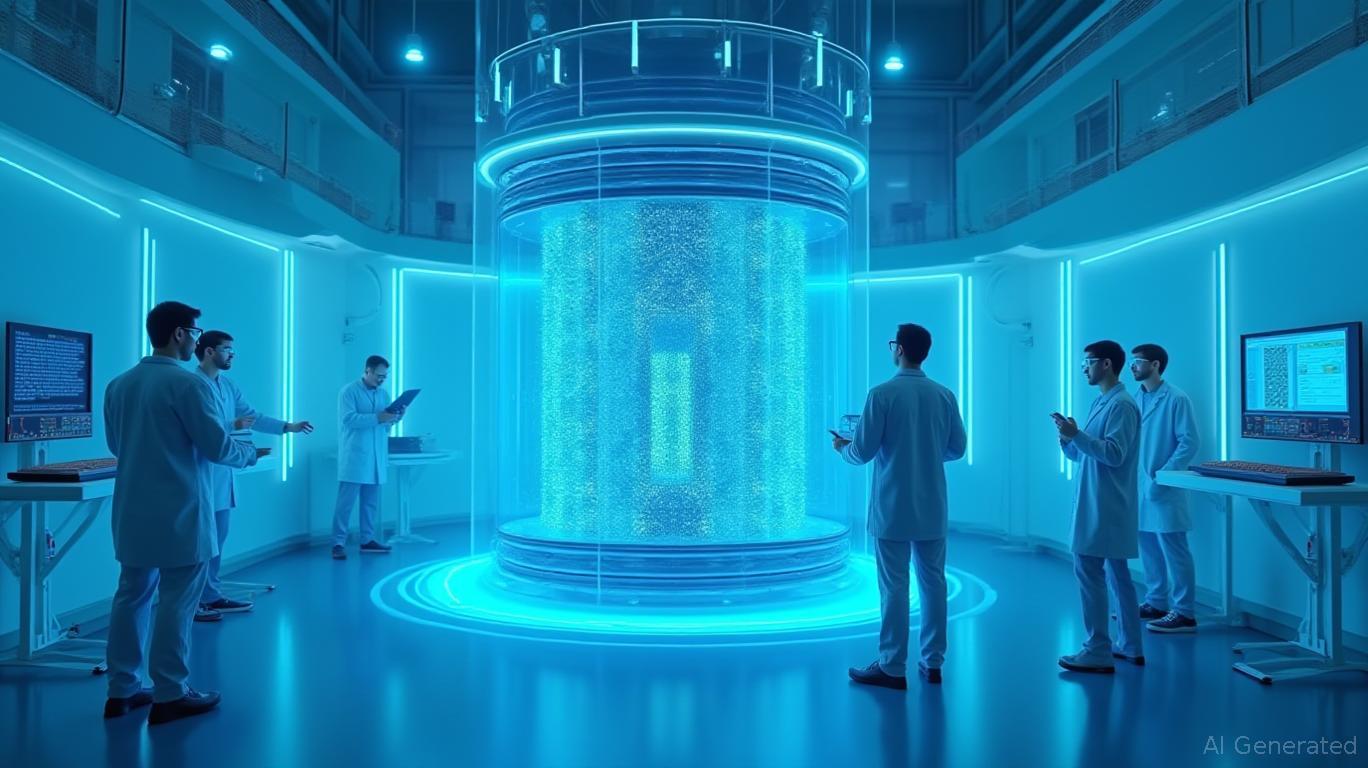Small Modular Reactors: The Engine of Green Hydrogen's Future
The global energy transition hinges on finding scalable, reliable solutions to decarbonize industries and meet surging demand for electricity. Among emerging technologies, small modular reactors (SMRs) paired with green hydrogen production are emerging as a critical nexus for both environmental and economic progress. First Hydrogen Corp.'s recent collaboration with the University of Alberta's Renewable Thermal Laboratory (RTL) epitomizes this synergy, positioning the company at the forefront of a transformative sector. This partnership, leveraging SMR innovation for green hydrogen production, is not merely an engineering feat—it is a strategic play in the race to secure energy security, decarbonize critical infrastructure, and capitalize on a multibillion-dollar market.

The Collaboration: Molten Salt SMRs and the AI Energy Crisis
First Hydrogen's partnership with RTL, led by Professor Muhammad Taha Manzoor, targets a breakthrough in SMR design: using molten salt as both a coolant and a medium for nuclear fuel. This technology addresses two existential challenges: the energy demands of AI data centers, projected to consume over 945 terawatt-hours annually by 2030 (equivalent to Japan's current electricity use), and the need for reliable, low-carbon power to decarbonize heavy industries.
Traditional hydrogen production relies on fossil fuels, emitting 830 million tons of CO₂ annually. Green hydrogen, produced via electrolysis powered by clean energy, offers a zero-emission alternative. SMRs excel here by providing 24/7 baseload power, independent of weather conditions, at costs competitive with renewables. The University of Alberta's research further bolsters this model: molten salt-cooled SMRs enhance thermal efficiency and safety, reducing the risk of meltdowns and enabling compact designs suitable for distributed energy systems.
Synergies in Scalability and Safety
SMRs offer unmatched flexibility. Their modular construction allows incremental deployment, aligning perfectly with the phased growth of AI data centers and industrial clusters. Unlike large nuclear plants, SMRs can be sited near demand hubs, minimizing transmission losses. First Hydrogen's subsidiary, First Nuclear Corp., is already advancing projects to integrate SMRs with green hydrogen production, creating a Hydrogen-as-a-Service (HAAS) model that could redefine energy delivery.
Safety is another cornerstone. Molten salt reactors operate at near-ambient pressure, eliminating catastrophic failure risks inherent to traditional reactors. This design simplifies regulatory approval and public acceptance—a critical advantage as governments worldwide prioritize decarbonization while balancing risk aversion.
Canada's Policy Framework: A Tailwind for Innovation
First Hydrogen's geographic advantage lies in Canada's robust hydrogen policy ecosystem. Alberta's Hydrogen Roadmap permits blending hydrogen into natural gas pipelines, reducing emissions without infrastructure overhauls. The federal Clean Hydrogen Investment Tax Credit (CHITC), offering up to 40% tax credits for low-carbon projects, further incentivizes SMR deployment. By 2035, these incentives could unlock $17.7 billion in capital for projects like First Hydrogen's.
The University of Alberta's Centre for Hydrogen Innovation (CHIWDO) amplifies this ecosystem. With over 60 researchers advancing storage (e.g., salt caverns), production (solar/water-splitting), and policy frameworks, CHIWDO ensures Alberta remains a global hydrogen hub. Its collaboration with Indigenous communities to develop locally sourced energy solutions also aligns with ESG priorities, enhancing First Hydrogen's appeal to socially responsible investors.
Market Growth: A $72 Billion Opportunity
The SMR market is projected to surge from $6.3 billion in 2024 to $72.4 billion by 2033, driven by decarbonization mandates and energy security concerns. First Hydrogen is well-positioned to capture this growth, given its proprietary SMR designs and partnerships. Competitors like NuScale and Rolls-Royce SMR are advancing similar projects, but First Hydrogen's focus on AI-driven energy demand—a sector growing at 15% annually—offers a unique niche.
Investment Considerations: Risks and Rewards
While SMRs promise transformative potential, risks persist. Regulatory hurdles for advanced reactor designs, public skepticism of nuclear energy, and competition from renewables must be navigated. However, First Hydrogen's alignment with Alberta's policy tailwinds and RTL's technical expertise mitigates these risks. The company's $700 million Series C-1 funding round in 2025 (led by Amazon's Climate Pledge Fund) signals institutional confidence.
For investors, First Hydrogen represents a leveraged play on two megatrends: AI energy demand growth and hydrogen's rise as an energy carrier. With a market cap still in the mid-range (circa $500 million), the stock offers upside as SMR projects scale.
Conclusion: A Catalyst for the Energy Transition
First Hydrogen's collaboration with the University of Alberta is more than a technical advancement—it is a blueprint for decarbonizing the 21st century's most energy-intensive sectors. By marrying SMR innovation with green hydrogen, the company is poised to lead a shift from fossil fuels to clean energy systems that are both resilient and scalable. With supportive policies, growing demand, and a technology edge, First Hydrogen exemplifies the kind of strategic investment that thrives in the era of decarbonization.
For investors seeking exposure to the hydrogen economy, this partnership marks a critical entry point. The road to net-zero is paved with challenges, but SMRs—and companies like First Hydrogen—are proving it can be navigated with innovation, policy, and vision.

Comments
No comments yet